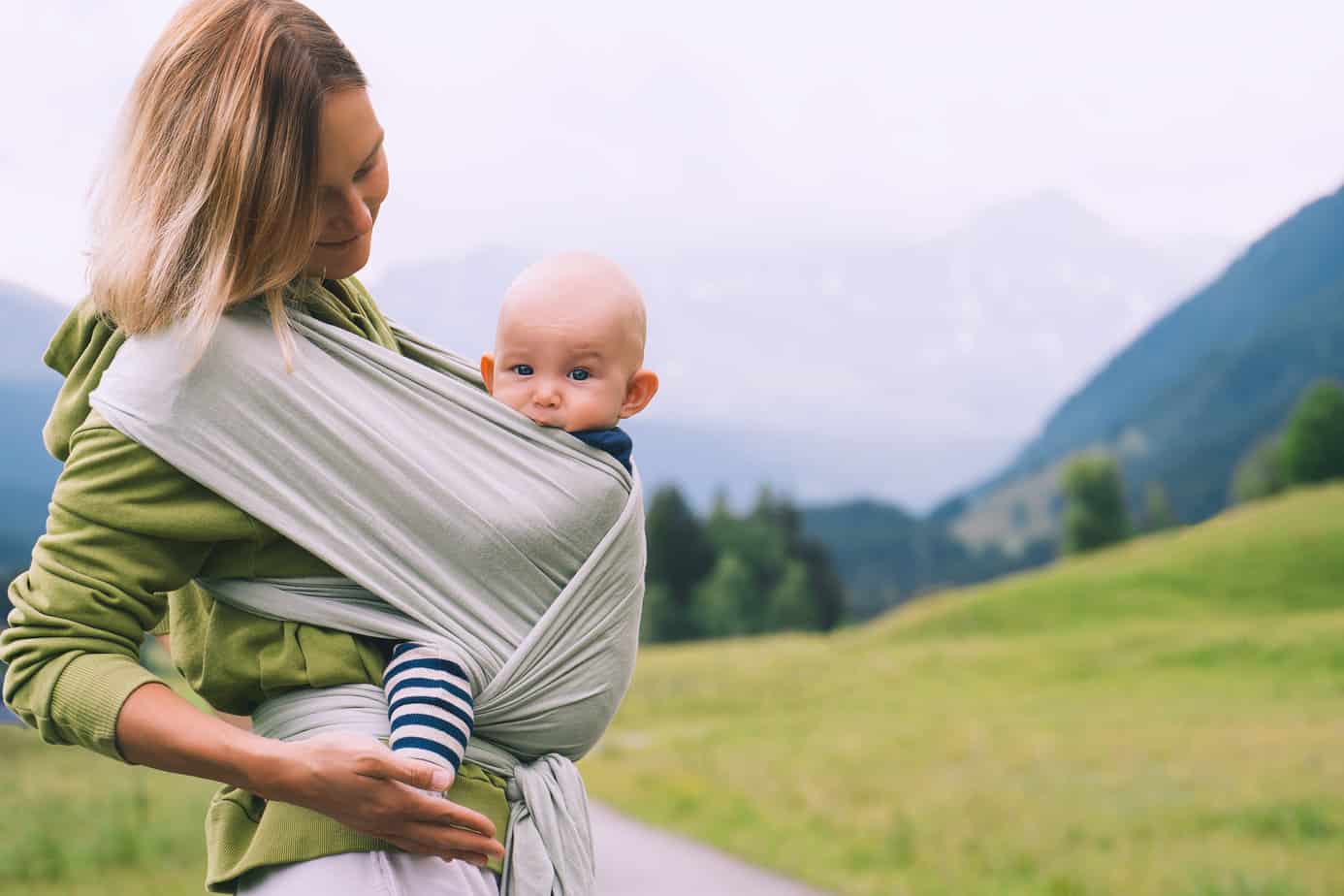In general, lighter babies can be carried in carriers earlier than heavier babies, and babies who are able to hold their heads up without assistance can be carried in carriers earlier than those who cannot.
Some parents choose to carry their babies in carriers for extended periods of time, while others only use them occasionally. It is important to consult with your healthcare provider to get specific guidance on when is the best time for you to start carrying your baby in a carrier.

Table of Contents
When Can I Carry My Baby In A Carrier?
This depends on a variety of factors, like your baby’s age, weight, and the type of carrier you are using. However, most health professionals recommend waiting until your baby is at least 4 or 5 months old before carrying them in a carrier.
You Can Begin Using A Baby Carrier Right Away
Baby carriers are a great way to keep your little one close and comfortable, no matter what stage of development they’re in.
You can take them with you when going into labor at home or even use an infant carrier right after birth for that first critical bonding time between you and your baby.
Getting in the benefits of skin-to-skin contact from day one? That’s what you can do if your baby meets certain requirements! Be sure to use an infant insert until your baby reaches a minimum weight.
Investigate Several Baby Carriers
When you’re looking for the perfect baby carrier, there are so many options to choose from. You’ll find wraps and slings as well as soft-structured (often referred to as buckle) or Mei Tai carriers that can be used with your newest addition in tow!
Before making any purchases, be sure to research what type is best suited based on safety reviews online.
Baby Carrying Positions And When To Use Them
There are a few different babies carrying positions, and each one has its own time and place. The following are some of the most common positions:
The Front Carry
This is probably the most popular position for carrying babies, as it keeps them close to their parents and allows for easy access to them. The front carry is good for newborns to about six months old.
The Back Carry
This position is good for older babies who can hold their heads up on their own and is perfect for long walks or hikes. It can also be helpful for parents with back problems.
The Hip Carry
This is a great position for newborns and young infants, as it keeps their heads and necks supported. It can also be helpful for parents with back problems.
The Cradle Carry
This position is perfect for newborns, as it keeps their heads and necks supported. It is also good for breastfeeding.
Each position has its own benefits and drawbacks, so it’s important to choose the one that will work best for you and your baby. Talk to your pediatrician if you have any questions or concerns.
Benefits Of Using A Baby Carrier
You know you want to take care of your new baby the best way possible, and using a baby carrier is a fantastic option. There are so many wonderful benefits of using a carrier, which include:
- Carriers keep your baby close to you, which helps promote bonding.
- Carriers allow you to have your hands free to do other things, like take care of your older children or get some work done.
- Carriers can also help soothe a fussy baby. Some babies love being in a carrier and will fall asleep within minutes.
- Finally, carriers can help keep your baby warm in the winter and cool in the summer.
Risks Of Using A Baby Carrier
There are a few risks to using a baby carrier, the most common of which is tripping or falling. Risks to be aware of include:
- Falls: Falls can occur when the baby carrier is used incorrectly or when the baby slips out of the carrier.
- Breathing problems: If the baby’s head is not well supported, it can slump forward and restrict the baby’s breathing.
- Incorrect positioning: If the baby is not placed in the carrier correctly, it can cause back and neck injuries.
- Choking: Loose fabric or straps on a baby carrier can easily become wrapped around a baby’s neck, which can lead to choking.
- Suffocation: A baby can accidentally suffocate if they are placed in a carrier that is too tight or if their nose and mouth are covered.
Safety Features
When looking for a sling or baby carrier, it is important to find one that is safe. There are a few things to look for when purchasing a baby carrier, which include:
- The first is to make sure that the carrier is made from sturdy materials and has been safety tested. The material of a sling or carrier is important because it can affect the safety of the child.
- Check the weight limit to make sure that the baby carrier can accommodate your baby’s weight.
- The construction of a carrier is also important. It should be well-sewn and have no loose threads that could catch on the child’s clothing or skin. The seams should also be strong and not prone to tearing.
- Be sure to follow the manufacturer’s instructions for use and never leave your child unattended in the sling or carrier. Your baby should also be able to breathe easily and not be constricted in any way.
Final Thoughts
Baby carriers are fantastic carrying options for your baby. Before making a purchase, be sure to consider your lifestyle and do your research. I hope this article was helpful!

